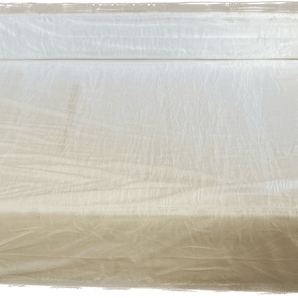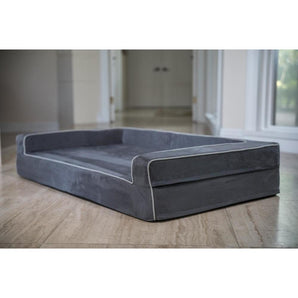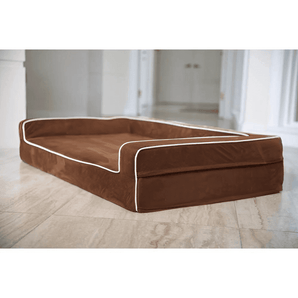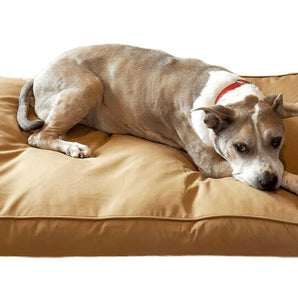Fleas on dogs are like unwelcome houseguests that arrive unannounced, stay way longer than they should, and don't take the hint when it's time to leave. These tiny little pests aren't just a source of irritation for your pup but can cause serious health issues too—ranging from allergic reactions to diseases.
A flea infestation is something every pet owner dreads, but with the right knowledge and tools, you can reclaim peace for your canine companion. Read on for more information how to spot fleas on dogs, what to do if your dog has fleas, and how to get rid of fleas on your pet and in your home.
What Are Fleas?
Fleas are tiny, wingless parasites that feed on the blood of mammals and birds, with dog fleas being a common concern for pet owners. Adult fleas, which you might spot as tiny, dark specks hopping on your dog, are just the visible part of the problem. They lay flea eggs on your dog, but these eggs often fall off into the environment, leading to infestation.
Flea bites can cause more than just an itch; they're known for triggering allergic reactions in dogs, leading to excessive scratching, hair loss, and potentially skin infections. They can transmit tapeworms and other diseases to your dog, making their control an important aspect of pet care.
How to Tell If Your Dog Has Fleas
Your dog can't outright tell you, "Hey, I've got fleas!" but they definitely have ways of showing it. If your furry friend is scratching like crazy, biting at their fur, or suddenly seems more irritated than normal, they might have fleas.
Look out for the following signs:
-
Excessive scratching, licking, or biting: This is often the first sign your dog may have fleas.
-
Flea dirt: These tiny black specks, also called "flea droppings," in your dog's coat are actually flea feces and a clear giveaway of an infestation.
-
Sightings of fleas: Tiny, fast-moving brown insects in your dog's fur are definite culprits.
Using a flea comb can help you confirm their presence, especially around warm, hidden spots like the base of the tail and around the ears. If you do suspect your dog has fleas, it's important to act quickly. Female fleas begin laying eggs within 24 hours of coming into contact with your dog, causing severe infestations if left untreated.
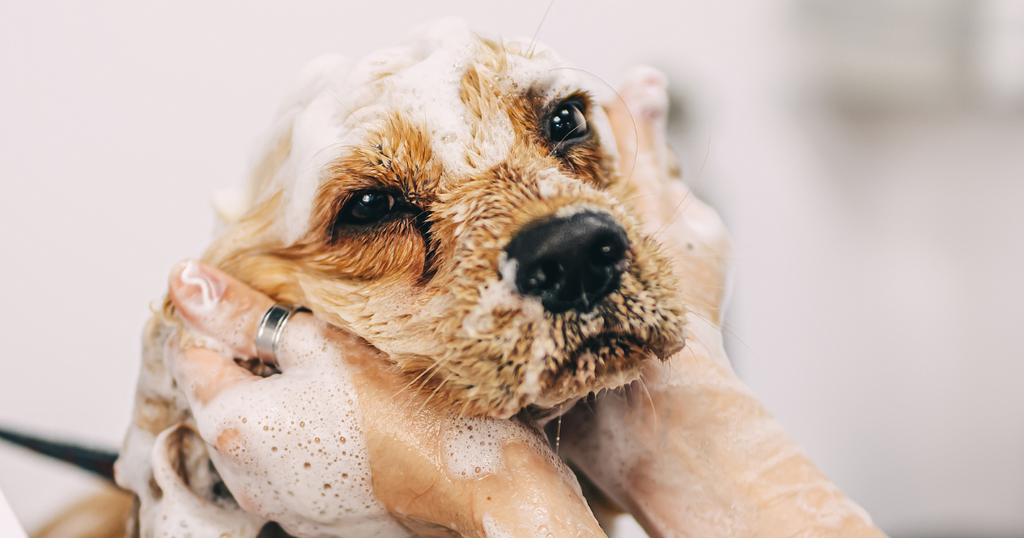
Tips for Treating and Preventing Fleas
1. Groom Your Dog Regularly
Grooming your dog regularly is an important part of good pet care, especially when it comes to keeping fleas at bay. Not only does it keep your dog looking and feeling their best, but it also plays a crucial role in flea detection and prevention.
At-Home Grooming Tips
-
Brush your dog regularly with a suitable brush for your dog's coat type can to remove loose fur and debris, reducing hiding spots for fleas.
-
Use a good flea comb to check for and remove fleas.
-
Bathe your dog with flea-repellent shampoo, especially those designed for sensitive skin.
-
Use anti-fungal wipes in-between baths to maintain cleanliness.
Professional Grooming
Sometimes, despite our best efforts, fleas can get out of control, or our dogs might simply be too challenging to groom thoroughly at home. In these cases, turning to professional groomers can help. Professional groomers have the tools, knowledge, and experience to provide a deep, thorough clean.
Professional grooming services often offer specialized flea treatments that go beyond what's possible at home. This can include the application of medicated shampoos, conditioners, and even flea dips, designed to kill fleas in all stages of their life cycle.
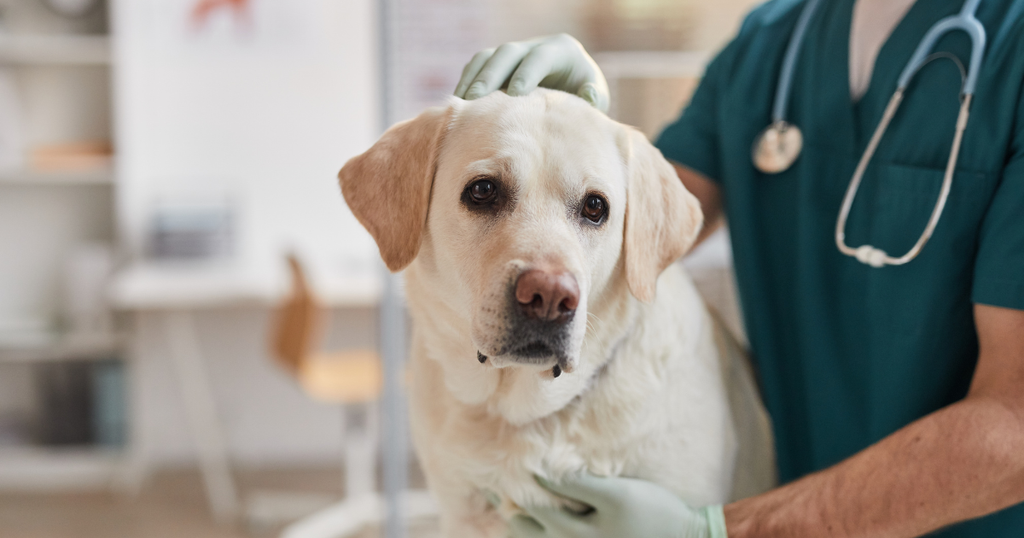
2. Use Preventative Products
Prevention is key when it comes to fleas. A proactive approach can save you and your dog from the discomfort and potential health risks associated with flea infestations.
Topical Solutions
Topical solutions like a flea shampoo or spray made for flea allergy dermatitis can help safeguard your dog against fleas. Topical solutions are applied directly onto the skin between the shoulder blades or along the spine, and most offer up to a month of protection, killing and repelling fleas upon contact. Many of these solutions also provide defense against other pests, such as ticks and mosquitoes, making them a versatile option in your pet care arsenal.
Oral Medications
Prescription flea medication can disrupt the flea life cycle and help prevent the development of flea larvae. Some varieties begin working within just a few hours, offering quick relief from existing infestations. Their ease of use, typically requiring a once-monthly dose, makes them a convenient way to get rid of fleas.
Dog Flea Collars
Flea collars offer a long-term preventative solution, with some designed to kill adult fleas on a dog's skin for several months. These collars gradually release active ingredients to continuously kill and repel fleas, offering a simple, set-and-forget method of protection. (Tip: If you have cats in your home too, invest in a cat flea collar to keep them from jumping between the two animals.)
Waterproof Pet Beds
Waterproof pet beds help prevent fleas by creating an inhospitable environment for the flea eggs to hatch. The material used in these beds doesn't absorb moisture, which means it also doesn't hold onto flea eggs or larvae that need certain conditions to develop. This ensures that any adult fleas attempting to set up camp are quickly disrupted, keeping your pet's sleeping area not only comfortable but also consistently flea-free.
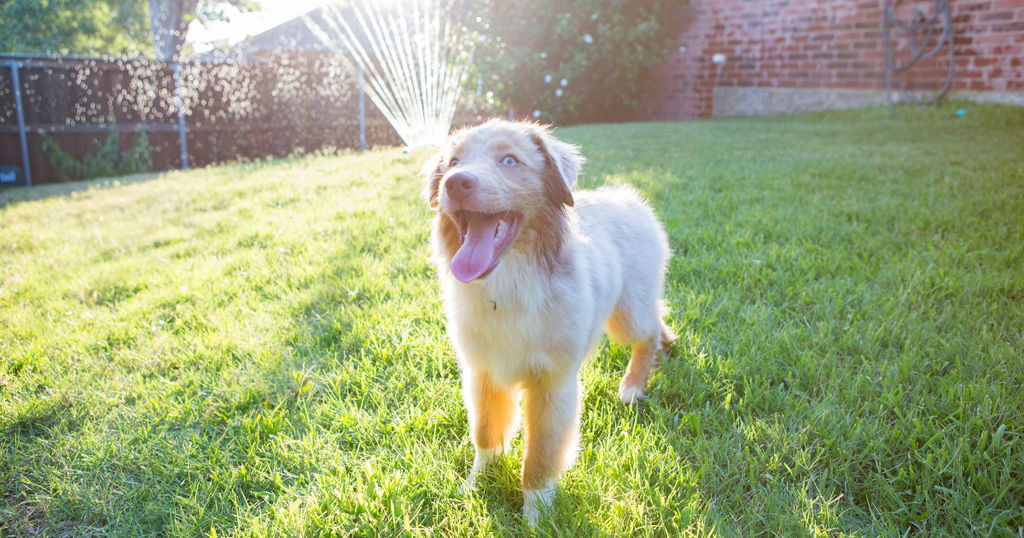
3. Maintain Your Yard
Fleas tend to thrive in warm, humid conditions and often seek shelter in tall grass, weeds, and piles of debris where they can easily jump onto passing animals, including your pet. By keeping your grass trimmed and your yard clear of unnecessary debris, you significantly reduce these ideal hiding spots, disrupting the flea life stages and preventing them from establishing themselves in your outdoor space.
4. Keep Your Home Flea-Free
Fleas can quickly turn your living space into a breeding ground for infestations if not promptly addressed. Maintaining a flea-free home is crucial for your pet's health and your comfort. Start with regular vacuuming of carpets, rugs, upholstery, and your pet's favorite hangouts, focusing on hidden spots like corners and under furniture.
Make sure to wash your pet's bedding regularly. We recommend washing dog blankets weekly in hot water to kill fleas and their eggs, and wipe down your pet's waterproof bed cover regularly to prevent flea dirt.
5. Incorporate Natural Flea Control Remedies
Homemade Flea Spray
Creating a homemade flea spray with an apple cider vinegar solution is a simple yet effective way to repel fleas. The acidic nature of apple cider vinegar is unappealing to fleas, making it a natural deterrent. To create this spray, mix equal parts of apple cider vinegar and water in a spray bottle. Lightly mist your pet's coat with the solution, avoiding the eyes, nose, and mouth.
Essential Oils
Essential oils such as lavender, peppermint, and lemongrass can also help prevent a flea infestation. These oils can be diluted with a carrier oil (like coconut oil) and applied sparingly to your pet's coat or added to their bath water.
Note: While natural, essential oils are potent and must be used with caution around pets. Always dilute essential oils with a carrier oil or water to lessen their intensity. Before applying any new oil to your pet, consult with your veterinarian.
6. Visit Your Vet For Regular Check-Ups
Regular veterinary check-ups are an integral part of maintaining your dog’s health and well-being, especially when it comes to preventing and managing flea infestations. These routine visits provide an opportunity for a professional evaluation of your dog's flea control plan and can catch infestations before they escalate into more serious problems.
During these check-ups, your vet can conduct a thorough examination of your dog's coat and skin, looking for signs of fleas, such as live fleas, flea dirt, or skin irritation caused by flea bites. Early detection is key to preventing a full-blown infestation, which can be more challenging and costly to treat.
Your veterinarian can also offer personalized advice on the most effective flea prevention methods tailored to your dog’s specific needs, lifestyle, and health status. This might include recommendations for specific types of flea treatments, such as topical solutions, flea medications, or flea collars, based on what would be safest and most effective for your pet.

What to Do If Your Dog Has Fleas
Take Immediate Action
When you spot fleas on your dog, immediate action is crucial for killing fleas and alleviating discomfort. Start by giving your dog a thorough bath with flea-repellent shampoo. It will not only kill fleas on contact but also soothe your dog's skin, which can become irritated from flea bites.
Make sure to follow the instructions on the shampoo label, paying close attention to how long the product should remain on your dog's fur before rinsing. This initial bath will help to significantly reduce the number of live fleas on your dog.
Consult Your Veterinarian
After addressing the immediate discomfort, the next critical step is to consult your veterinarian to develop a comprehensive plan to treat fleas and prevent their return. Your vet can recommend specific products and methods tailored to your dog’s health, age, and the severity of the flea infestation. This might include a combination of topical treatments, oral medications, and possibly environmental controls for your home and yard to eliminate fleas at every stage of their life cycle.
Remove Fleas From Your Home
Fleas can survive without a host for many months, hiding in carpets, furniture, and even cracks in the floor. Addressing the infestation in your home is essential to prevent re-infestation and to fully get rid of fleas on dogs.
Vacuum your home thoroughly, paying special attention to carpets, upholstery, beneath furniture, and areas where your pet spends a lot of time. Be sure to immediately seal and dispose of the vacuum bag or empty the canister outside your home to prevent fleas from escaping back into the living area.
Wash all pet bedding, blankets, and any washable covers in hot water. This will kill any remaining fleas and their eggs. It's also a good idea to wash your own bedding and any other textiles your dog has been in contact with to ensure no fleas are left lurking around.
Treat Your Home with Flea Control Products
There are various flea control products available that are designed to treat homes, including sprays, powders, and foggers. Choose a product that is safe for use around pets and children and follow the instructions carefully. It may be necessary to leave the house for several hours after application to let the product work effectively and to ensure the safety of your family and pets.
Consider Professional Pest Control
If the flea infestation in your home is severe, it might be worth considering professional pest control services. Professionals can apply powerful treatments to your home and yard that are often more effective than over-the-counter products. They can also offer tailored advice to prevent future infestations.
A Flea-Free Pet is a Happy Pet
Ensuring your pet remains flea-free is more than just a comfort; it's a cornerstone of their health and happiness. Dog fleas can cause skin irritation, allergic reactions, and they can even transmit diseases. By taking proactive steps to prevent, treat, and eliminate fleas from both your pet and your environment, you're not just protecting them from discomfort—you're safeguarding their well-being.
Ultimately, the effort you put into keeping your pet flea-free is a testament to your love and dedication to their health and happiness. In return, you'll enjoy the peace of mind that comes from knowing you've provided a safe, comfortable, and loving environment for your furry family member. Remember, a flea-free pet isn't just a happier pet; it's a healthier, more vibrant companion ready to enjoy every moment with you.


